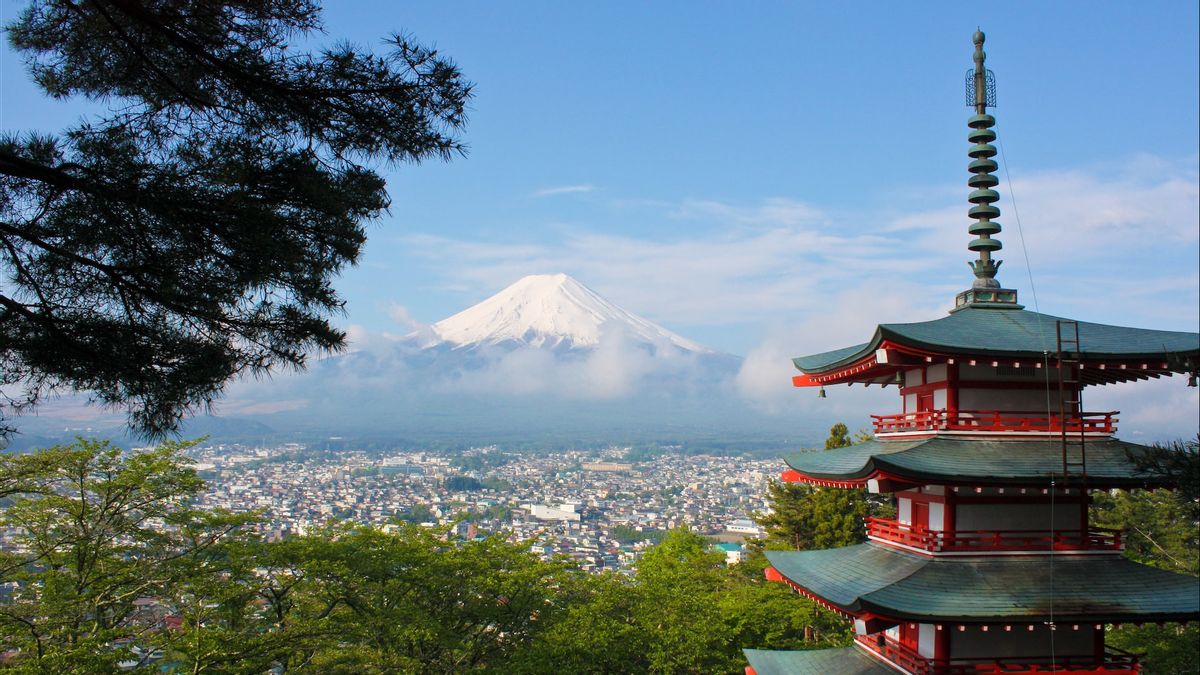YOGYAKARTA - The turn of the year is a time that many people have been waiting for. At this moment, people will usually hold celebrations or parties. There is always a special tradition every time before the year of the end of the year and when entering the new year. Therefore, at this moment many go on vacation or gather with their closest people.
Each country has a different tradition in the celebration of the new year. Japan has become one of the countries that has many traditions and habits during the new year. This tradition has been implemented since the time of their ancestors and is still being preserved today.
What are the traditions of the new year in Japan? Not always with trumpets or fireworks, but also done with simple things such as cleaning and decorating the house.
There are a number of traditions that are always carried out by Japanese people during the new year. Here are the unique habits.
Oosoji is a tradition of cleaning houses carried out by Japanese people at the end of the new year. Oosoji's tradition is carried out by all groups, from children to parents. This habit is done so that the house will be clean towards the end of the year. Every corner of the house is cleaned with the family.
Towards New Year's Eve, family members in Japan will usually visit. With a clean house, the moment of gathering becomes comfortable. In addition, it is hoped that it can provide a newer feel and raise enthusiasm.
Kadomatsu is a tradition of making decorations that are placed on the door of the house. This habit is carried out during the New Year's Period, until the beginning of January. The leaves are made of pine trees and bamboo, as well as premium trees.
For the Japanese people, the three trees are believed to be able to give good luck to the owner of the house. They mean a spanning tree with a long life.
Shimekazari is the same tradition as Kadomatsu, which is to hang decorations on the door of the house. The reasons in question are various items that are believed to invite luck.
In addition, Japanese people believe Shimekazari can refuse reinforcements or ill luck. Thus, family members can also be given safety. When the new year period is over, Shimekazari and Kadomatsu will be taken to the temple to be burned in a ceremony to fulfill their wishes.
Kagamimochi is a tradition of making two large and small mochi cakes. Both mochi cakes have a diameter of 10 to 20 centimeters. Both mochi cakes will be put on the dining table accompanied by oranges.
This food was originally intended for the gods. But now it's only used as decoration to enliven New Year's celebrations. Mochi is also usually eaten by family members and accompanied by typical habits.
Joya No Kane is a tradition of ringing big dolls in temples. There were 108 times of beatings which meant a form of human lust. This unique tradition is still being carried out today.
Toso is a habit of drinking sake in the morning when entering the new year. This activity has become a habit in Japanese society, especially parts of Japanese goods.
The rules for drinking the sake are not arbitrary. Sake must be drunk using 3 shallow plates and stacked into one. Inside the sake is contained in various plants that have the meaning of making luck.
Hatushinode is a tradition of seeing the sunrise for the first time in the new year. Moreover, Japan has the nickname the country of the rising sun. Watching the sunrise for the first time is a habit that should not be missed. Japanese people will usually come to the beach or mountains to do a hasushinode.
Those are a number of New Year's traditions in Japan that are unique and rarely found in other countries. For those of you who want to go on a New Year's holiday, visiting Japan can be an attractive option.
Stay up to date with the latest domestic and foreign news on VOI. You present the latest and most recent nationally and internationally.
The English, Chinese, Japanese, Arabic, and French versions are automatically generated by the AI. So there may still be inaccuracies in translating, please always see Indonesian as our main language. (system supported by DigitalSiber.id)









